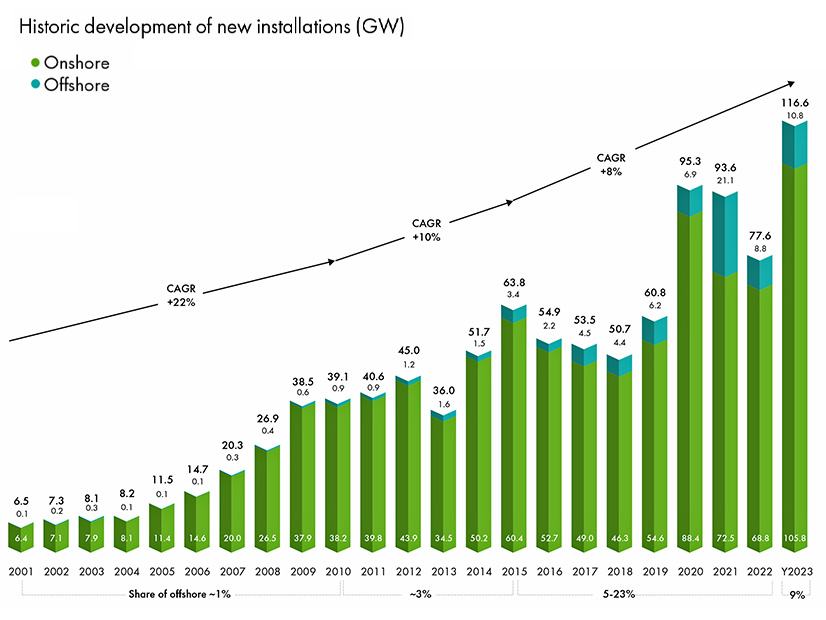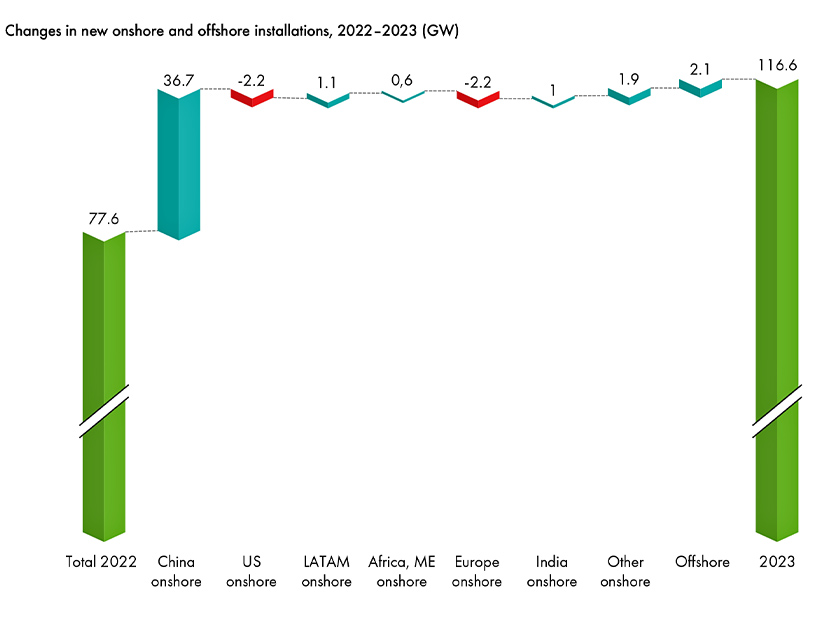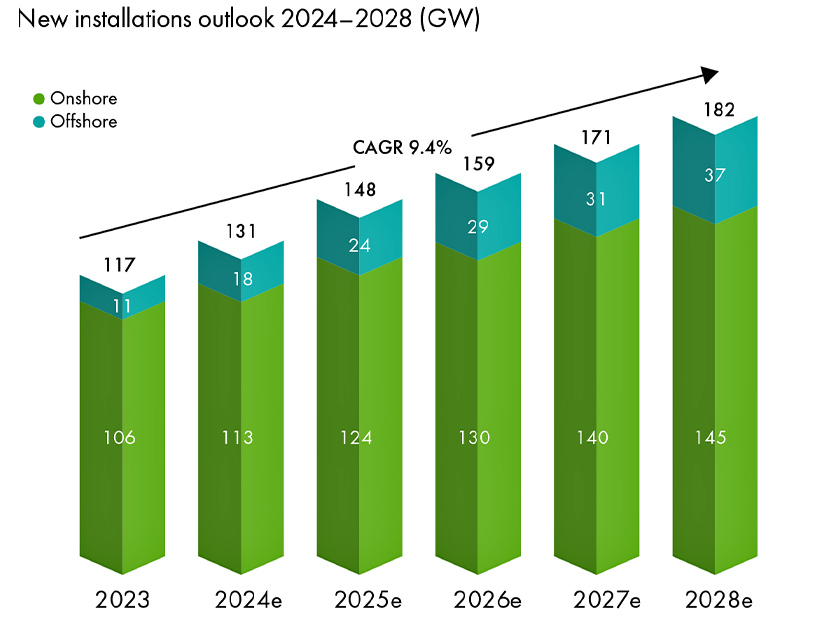
The wind energy sector installed record capacity worldwide in 2023 and is on pace for continued strong growth in the next five years, an international trade organization for the industry said.
However, wind turbine installation rates must increase sharply to meet emissions reduction targets, the Global Wind Energy Council said in its 2024 report, issued April 16.
Some 117 GW of wind energy generation was installed in 2023, but the total must jump to at least 320 GW a year by 2030 if the world is to stay on the pathway set at COP28 and limit global warming to 1.5 degrees Celsius, GWEC said.
“It’s great to see wind industry growth picking up, and we are proud of reaching a new annual record,” CEO Ben Backwell said in introduction to the report. “However, much more needs to be done to unlock growth by policymakers, industry and other stakeholders to get on to the 3X pathway needed to reach net zero. Growth is highly concentrated in a few big countries like China, the U.S., Brazil and Germany, and we need many more countries to remove barriers and improve market frameworks to scale up wind installations.”
Within the record-high 117 GW installation total, some milestones and firsts were recorded in 2023:
-
- It was the first year new onshore wind capacity exceeded 100 GW.
- Total installed capacity surpassed 1 TW, reaching 1,021 GW by year end, a 13% year-over-year increase.
- China had its busiest year ever; the 75 GW it brought online accounted for nearly two-thirds of the global construction total.
- Offshore wind development did not set a record, but the 10.8 GW completed in 2023 was the second-highest annual total ever.
Based on these and other factors, GWEC predicts the world will reach 2 TW of installed wind energy capacity by the end of 2029 — a year earlier than it projected in its 2023 report.
While this is strong progress, it leaves the world far short of the COP28 goal of tripling renewable energy, said GWEC Chair Jonathan Cole.
He called for nations to de-risk and accelerate buildout of renewables by prioritizing investment in transmission infrastructure and streamlining permitting. He said political leaders need to send clear market signals that the energy transition will happen, take steps to encourage supply chain growth and remove barriers to free trade.
“Global Wind Report 2024” focuses on four areas — investment, supply chains, system infrastructure and public consensus — that GWEC considers key to wind energy growth.
It also looks at potential obstacles, including too-rapid innovation that puts quality control at risk; effective opposition by interest groups via social media; workforce planning disruption by robotics and artificial intelligence; and the digital divide between nations and regions that limits some countries’ ability to carry out the energy transition.
GWEC flagged 12 key takeaways from the 2024 edition of its annual report:
-
- Meaningful action will be needed to mobilize larger volumes of investment into wind energy.
- Stable and ambitious policy environments that offer reasonable returns on investment will foster growth at scale.
- Collaboration is needed to build a secure global supply chain with healthy, managed competition.
- Trade policy should foster competitive industries, not push higher costs onto end-users.
- New production models are needed to industrialize and decelerate the race for ever-bigger turbine platforms.
- The advantages of AI and machine learning must outweigh the drawbacks.
- Grids must become a national policy priority for countries to meet their energy security, climate and economic growth goals.
- Policymakers should prepare to utilize storage, demand-side response and other solutions to scale modern and flexible power systems.
- Permitting should be accelerated through early, extensive and effective engagement and a shared understanding of its effects for communities, nature and users of land or sea spaces.
- Community engagement is more critical than ever.
- Planners should guard against misinformation that sows doubt in wind and renewable energy.
- The global wind industry must help deliver a just and equitable transition.




